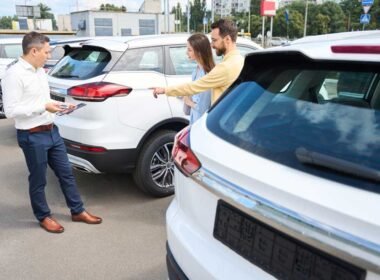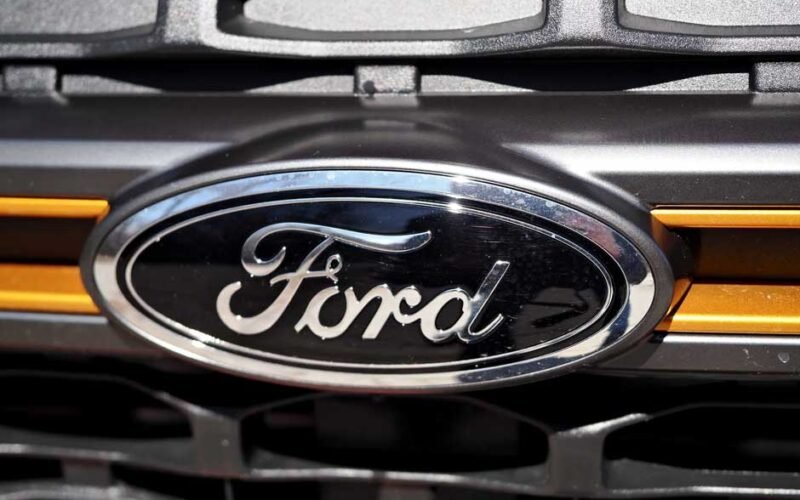In today’s fast-paced, tech-driven world, the automotive industry is undergoing a radical transformation. No longer is a test drive simply about getting behind the wheel and going for a spin; instead, it’s evolving into a tech-infused experience that begins online and is powered by data, personalization, and digital engagement. For auto retailers, keeping up with these changes is crucial—not only to improve customer experience but to stay competitive. This is where the expertise of a car dealer marketing agency becomes invaluable. Such agencies help dealerships harness the latest technology trends to market their test drives more effectively, turning prospects into loyal customers. In this article, we’ll explore how technology is reshaping the way test drives are marketed, and why a digital-first strategy is essential for modern car dealers.
The Changing Landscape of Car Buying
Consumer behavior is evolving rapidly. Research shows that most car buyers begin their journey online, spending hours researching models, reading reviews, comparing prices, and even customizing vehicles virtually. By the time they arrive at the dealership, many already know what they want. This shift makes it imperative for dealerships to market test drives as not just a sales tactic but as an extension of the online research process. Test drives have become experiential checkpoints where technology bridges the gap between interest and ownership.
The Role of Digital Channels in Test Drive Marketing
Digital marketing plays a vital role in promoting test drives. Channels such as social media, email marketing, and pay-per-click (PPC) ads allow dealerships to target specific customer segments with test drive invitations tailored to their preferences. With the help of AI-powered tools, dealers can analyze browsing behavior and past interactions to deliver highly personalized messages. Platforms like Facebook and Google offer robust targeting options, ensuring that ads reach users who are most likely to schedule a test drive.
Virtual Test Drives and Immersive Experiences
One of the most exciting innovations in test drive marketing is the use of virtual and augmented reality (VR/AR). Virtual test drives allow potential buyers to experience a car’s features from the comfort of their home. Using VR headsets or even a simple smartphone, customers can “drive” a car through various environments and get a feel for its performance, design, and features. These immersive experiences reduce friction in the buying process, especially for tech-savvy consumers who expect convenience and innovation.
Mobile-First Strategies for Scheduling Test Drives
Mobile devices are central to how people interact with brands today, and the automotive sector is no exception. Dealerships are increasingly adopting mobile-first strategies to promote and manage test drives. Optimized landing pages, SMS reminders, and mobile booking forms make it easy for customers to schedule a test drive in just a few taps. Moreover, geolocation technology can be used to notify users about nearby dealerships or upcoming test drive events, enhancing real-time engagement.
Leveraging Data Analytics for Better Targeting
The power of data cannot be overstated when it comes to marketing test drives. From CRM systems to third-party data sources, dealerships have access to an abundance of information about potential buyers. Advanced analytics tools allow marketers to segment audiences based on demographics, behavior, and purchase intent. By understanding customer journeys, marketers can craft targeted campaigns that reach the right person with the right message at the right time—maximizing the likelihood of a test drive booking.
Integrating AI and Chatbots in the Test Drive Funnel
AI-driven chatbots are becoming a crucial tool in the test drive marketing arsenal. These bots can handle inquiries 24/7, answer questions about vehicle models, and even help users schedule a test drive directly from a dealership’s website or social media page. They offer a frictionless user experience, ensuring no lead is left unattended. In addition, AI algorithms can recommend vehicles based on the user’s preferences and past interactions, making the process more intuitive and engaging.
Influencer and Content Marketing for Test Drive Awareness
Influencer marketing isn’t just for fashion and beauty brands—it’s gaining traction in the automotive world too. Car enthusiasts and tech reviewers on YouTube, Instagram, and TikTok often have large followings who trust their opinions. Partnering with these influencers to showcase test drive experiences can generate authentic buzz and reach audiences that traditional advertising might miss. Similarly, creating engaging content—such as blogs, vlogs, and behind-the-scenes videos—can demystify the test drive process and make it more appealing.
Using Video to Drive Engagement
Video content continues to dominate digital marketing, and for good reason. It’s visual, dynamic, and easy to consume. Car dealers can leverage video to showcase the highlights of a vehicle, walk viewers through the test drive experience, or present testimonials from satisfied customers. Short-form video content is particularly effective on platforms like TikTok and Instagram Reels. These videos can be boosted through paid promotions to increase visibility and drive traffic to test drive booking pages.
Seamless Online-to-Offline Experiences
Today’s consumers expect a seamless experience that bridges the gap between online research and in-person visits. Dealerships that integrate their online platforms with offline processes are better equipped to deliver this continuity. For example, a customer who books a test drive online should receive confirmation emails, calendar invites, and post-visit follow-ups automatically. Tools like integrated CRM systems and automation platforms ensure that the transition from digital to physical is smooth and consistent.
Event-Based Marketing and Pop-Up Test Drives
Event-based marketing can create buzz and urgency around test drives. Pop-up test drive events in high-traffic areas like malls, tech expos, or corporate campuses are a creative way to bring the experience to potential customers. These events can be promoted via geo-targeted ads, influencer partnerships, and real-time social media updates. Such events not only generate leads but also provide valuable brand exposure and customer insights.
Test Drive Metrics and ROI Tracking
It’s not enough to simply offer test drives; measuring their effectiveness is just as important. Key performance indicators (KPIs) like the number of test drive bookings, show-up rates, conversion to sale, and customer satisfaction scores offer insights into what’s working and what’s not. Advanced marketing platforms allow for detailed tracking and attribution, so dealerships can calculate the return on investment (ROI) from their test drive campaigns. Understanding these metrics enables continuous optimization and better resource allocation.
Challenges and Considerations in Tech-Driven Test Drive Marketing
While technology offers immense benefits, it also comes with challenges. Privacy concerns, system integration issues, and the need for continuous staff training can hinder implementation. Moreover, dealerships must ensure that the digital experience aligns with the in-person one. A disconnect between the two can damage trust and reduce the likelihood of conversion. Expert marketing partners can help navigate these hurdles by providing strategic guidance, technical support, and ongoing performance analysis.
Conclusion
Marketing test drives in the digital age is about more than getting people into the driver’s seat—it’s about creating a seamless, tech-enhanced experience that starts online and continues through every touchpoint. From virtual test drives and AI chatbots to video content and data-driven personalization, technology offers numerous ways to engage modern car buyers. Dealerships that embrace this shift and build their strategy around innovation will be best positioned to not only attract more customers but also build lasting relationships. As innovation continues to reshape the automotive landscape, those who stay ahead of the curve will lead the way in both marketing success and customer satisfaction.










